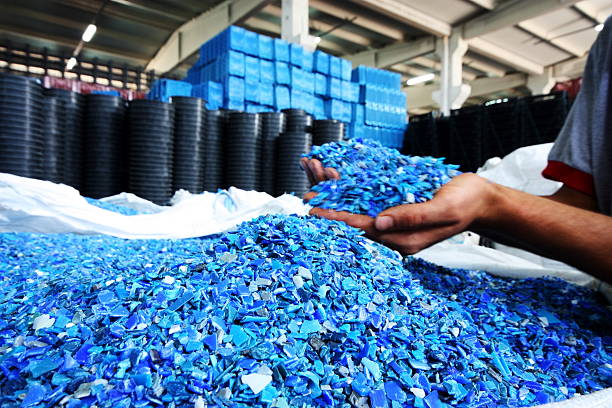Challenges Faced by the Plastics Recycling Industry
Plastic material air pollution has become a developing enviromentally
friendly problem these days. With plastic squander simply being dumped
into the oceans, rivers, and landfills, it's about time we understand
the value of plastic material recycling. Recycling plastic squander not
just really helps to conserve vitality and reduce garden greenhouse
gasoline pollutants but also decreases the quantity of plastic-type
waste materials that winds up in landfills and oceans. In this post, we
shall discuss the fundamentals of recycle plastics, the different kinds of plastic materials, and the ways to reuse them.

Varieties of Plastics:
Plastic materials come in variations, each and every having its exclusive qualities. As a result, it's important to know the different types of plastic materials before recycling them. The seven varieties of plastic materials are:
1. Polyethylene Terephthalate (PETE or PET)- Plastic containers, luggage, and food wrapping.
2. High-Denseness Polyethylene (HDPE) - Milk products storage containers, containers, and food totes.
3. Polyvinyl Chloride (PVC) - Vinyl fabric plumbing and wrapping, artificial leather material, and toys.
4. Low-Solidity Polyethylene (LDPE) - Reduce wraps, squeezable bottles, and plastic-type material motion pictures.
5. Polypropylene (PP) - Yogurt mugs, plastic straws, and bottle hats.
6. Polystyrene (PS) - Foam mugs, dishes, and takeout storage containers.
7. Other plastic materials (OMG) - Composites, polycarbonate, and bioplastics.
Trying to recycle Method:
The first step inside the plastic-type material recycling method is always to collect the fabric. Cities collect plastic-type spend, which happens to be then sorted by hand or unit at a recycling heart. Plastic materials are categorized based on their sorts, sanitation, and colours. Messy plastic-type storage units, lids, and foods scraps are not satisfactory within the trying to recycle process since they can pollute the reused plastic-type.
When the plastic materials are sorted, they can be sliced and shredded into little pieces and washed to eliminate any staying food items or particles. The plastic-type shreds are dissolved and shaped into tiny pellets, which are then employed to develop new releases. The process of trying to recycle plastic material could be repeated several times just before the plastic material fabric weakens and has stopped being suit for reuse.
Advantages:
Trying to recycle plastic material spend gives numerous positive aspects, like:
1. Decreases plastic-type material spend that eventually ends up in oceans, rivers, and trash dumps.
2. Saves vitality during the production newest plastic-type material items.
3. Minimizes green house fuel emissions, which is actually a substantial ecological benefit.
4. Encourages a circular overall economy, exactly where plastic is used again, and waste materials is reduced.
5. Lessens the reliance upon fossil fuels since new plastic-type generation makes use of oil.

Summary:
To conclude, plastic-type squander has changed into a demanding enviromentally friendly concern that should be addressed. Trying to recycle plastic-type waste materials is a wonderful strategy to decrease the amount of plastic material that winds up in oceans, rivers, and landfills. Also, recycling plastic provides a number of enviromentally friendly advantages that help to promote a environmentally friendly future. As responsible people, it's our responsibility to recycle plastic-type material waste materials and advertise environmentally friendly dwelling. By doing so, we can make a substantial influence in reducing plastic-type spend and marketing a environmentally friendly long term.
Comments
Post a Comment